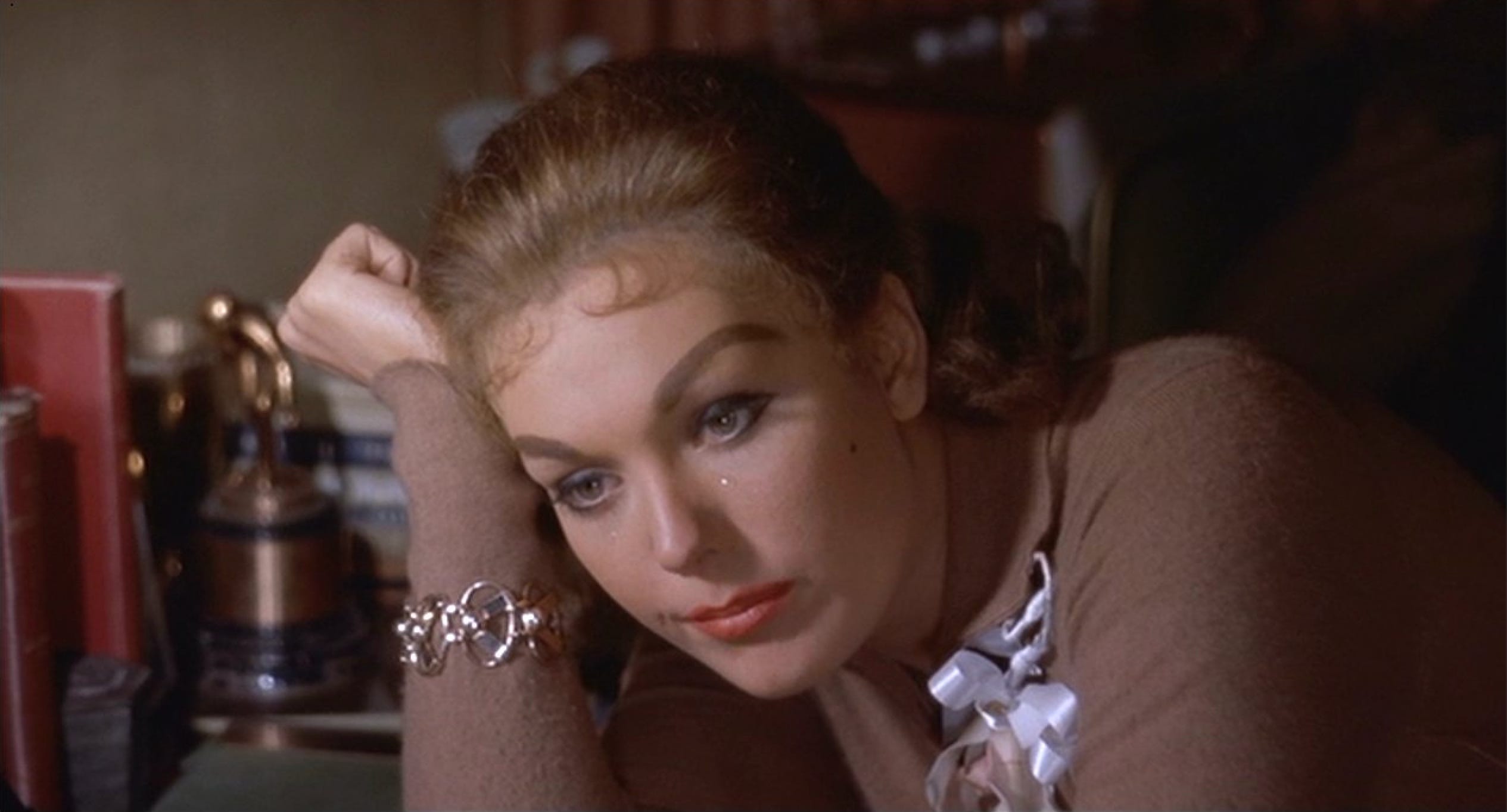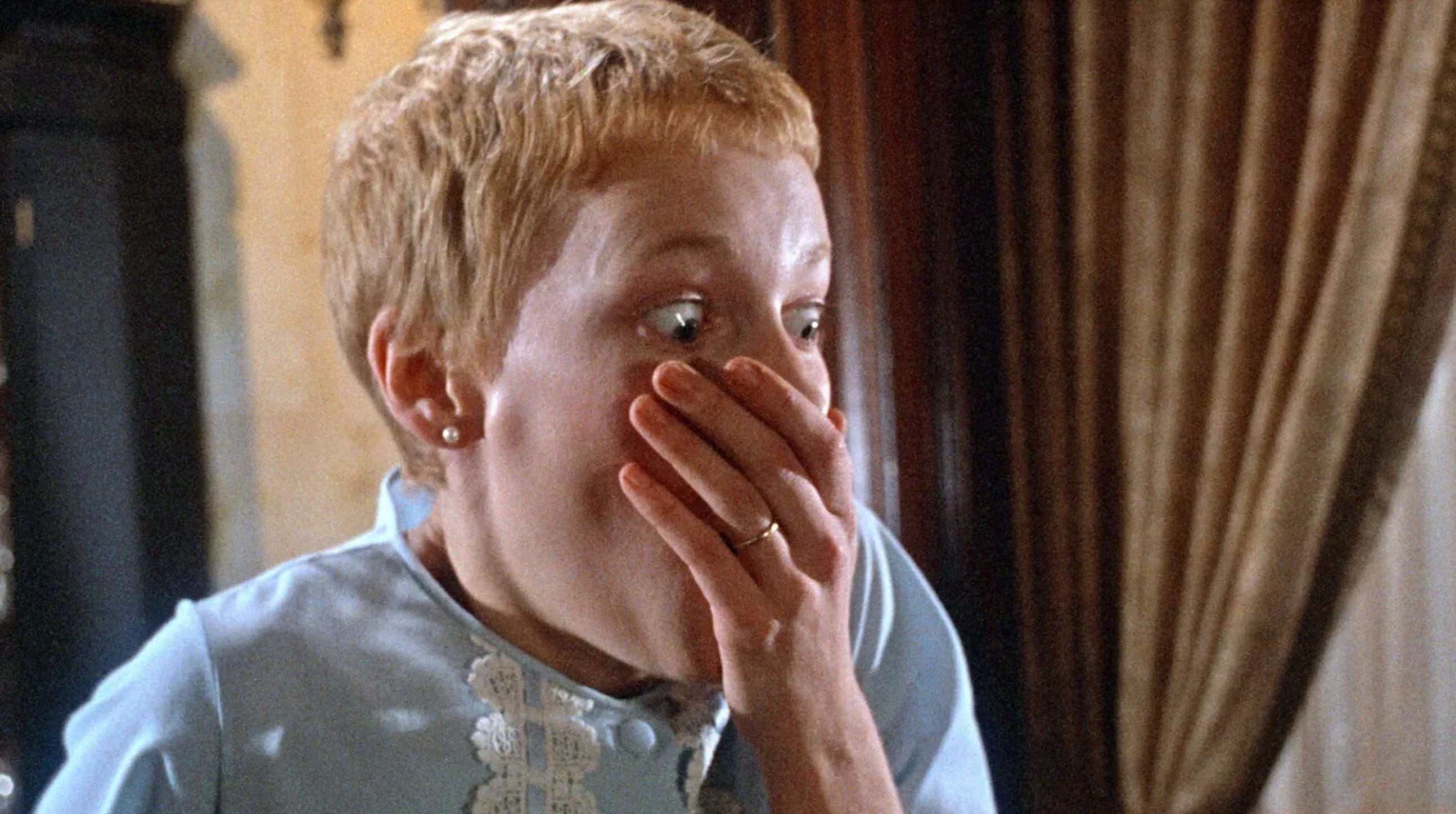By the by, sweet babe, through heartbreak, longing, toil and trouble, we now witness this year’s end. O, moon, overcome me! Crimson syrup atop the rock, I emerge bare-bodied, beaming.
I look to the brook and see, dear darling, a year of love letters once flung to thee with fervent adoration. Darkest night falls as I gaze to a blanket of stars and ponder upon the future. I think and dream, my love, of playing a role for you on stage, in this here life. Ever so slowly, I phantasise the body and all its rotting appendages - flesh and fibre, sinew and bone - as an extension of artistic practice. Artist as Actor, an apparition split in two. Kim Novak in Vertigo. Who dost thou wish to be?
Desire, I want to dive into you!
Kim Novak as Judy Barton / Madeleine Elster in Vertigo (1958) dir. Alfred Hitchcock.
That ruby-red flame began to flicker, babe, that pine to stand upon mine mark, as I recently viewed a video by American designer, fashion forecaster and commentator Rian Phin, upon the importance of fashioning identity. Prompted by the writing of Scott L. Ruff, Maria Mackinney-Valentin and Ingrid Loschek, Phin thoughtfully outlines the function of clothing as a means of constructing the self, of taking up space - particularly within marginalised communities, movements and subcultures.
Referencing Loschek’s When Clothes Become Fashion, Phin posits that “…taking up space gives fashion depth and reason and point, and allows for an image to…visually resound, bounce and reverberate over time.”
From this reverberation, Phin deliniates sound as a valuable device for establishing presence within a given space. “How much noise do you want to make when you take up space? What sounds do you want to make? Do you want to move through a room silently, do you want to wear a hard boot that smacks as you hit the floor?…How do these sounds impact the way that you’re perceived?” I then wonder, love, about the clothing I wear to mask my body, to compress my chest, to obscure my frame. The shoes beneath my feet, torn and threadbare, which tread over snow in silence.
Mia Farrow in Rosemary’s Baby (1968) dir. Roman Polanski.
I recall, baby-angel, in mine younger years, a burgeoning and palpable pain of how I navigate the world in proximity to gender. Gender Trouble becomes all too troubling. Putrid bile swells within mine belly, as I feel and know how I shrink and shrink and shrink for others. Slipping silently through concrete, making mine body smaller in thine street, becoming uncomfortable, invisible, ever-serving to the whims and fancies of others.
I long to paint this feeling.
A painting a month, for the next twelve months. Ambitious, I know, but I already maintain a backlog of ideas. Final Girl has not been forgotten.
In the small hours some moons ago, I wrote a work to be titled A Private View. Five-foot-tall, muddy and mossy and brooding in Olde English Blackletter. She unfolds, as follows: I watch Demons / and all their devices / Unscrupulous lies, unholy vices / No heart, here see! / Stone frozen over! / Against mine chest a four-leafed clover / Untoward me, slither, / you are not sober.
In an armchair I sat softly as locks were chopped without hesitation. Thick silk ringlets falter to the floor as I emerge as a girl on film. I have come to find, my love, that in much hindsight, upon each and every visit to the salon I reveal an actress, a character, I wish to be. Sigourney Weaver in Alien, Nastassja Kinski in Paris, Texas, and now, for better or for worse, Mia Farrow in Rosemary’s Baby. Women wrought with pain and anguish, dizzied by violence, hyper-ventilating.
I adore the allure of heroines.
Louise Brooks as Lulu in Pandora’s Box (1929) dir. G. W. Pabst.
Sat solemnly I yearn for, as always, those bright-young-things of yesteryear. I fall, angel, back into the thick of it, those cold clouded depths, scouring the abyss for girls of the silver screen. A fascination for pre-code Hollywood cinema is beginning to fester intensely. Weeping! Weeping from mine heart, an earnest fascination, intrigue, love for ‘lost girl’ Louise Brooks. Once a Ziegfeld follie, Brooks found international appeal in the works of Austrian director G. W. Pabst, including Pandora’s Box and Diary of a Lost Girl.
A definitive figure of American silent film, Brooks epitomised the flapper: boisterous, unabashed, exuberant. Black-helmet hair, pencil-thin brows, and a look of knowing. Akin to such starlets of the era, by age thirty Brooks slowly succumbed to financial hardship and subsequent squalor.
Following years spent secluded within the bedroom of her New York apartment, Brooks experienced a resurgence of her work within the latter half of the 20th century, accredited to French film historian Henri Langlois. Langlois proclaimed, boldly, “There is no Garbo! There is no Dietrich! There is only Louise Brooks!” Much soon after, Brooks began to establish herself as a prominent writer, often reflecting upon her early experiences within the film industry, now compiled within Lulu in Hollywood.
In the mid-1970s, Brooks was interviewed by British director Richard Leacock for a documentary entitled Lulu in Berlin, recounting Brooks’ move from America to Europe in search of more emotionally demanding roles. The opening cites Brooks as “…the most seductive, sexual image of a woman ever committed to celluloid.”
I often consider the distinction between ones’ public versus private persona. Brooks recounts her work through the eyes of ‘Lulu’, and, reflecting upon her contemporaries of the era, in particular actress Clara Bow, Brooks states that “…Clara [Bow] didn’t really exist… she didn’t exist off the screen, she manufactured this whole person…” I look, now, to the future dear reader, crystal clutched within mine palm, and consider this notion within the greater scope of my writing and artistic practice.
A new world, a new girl, committed to celluloid.







